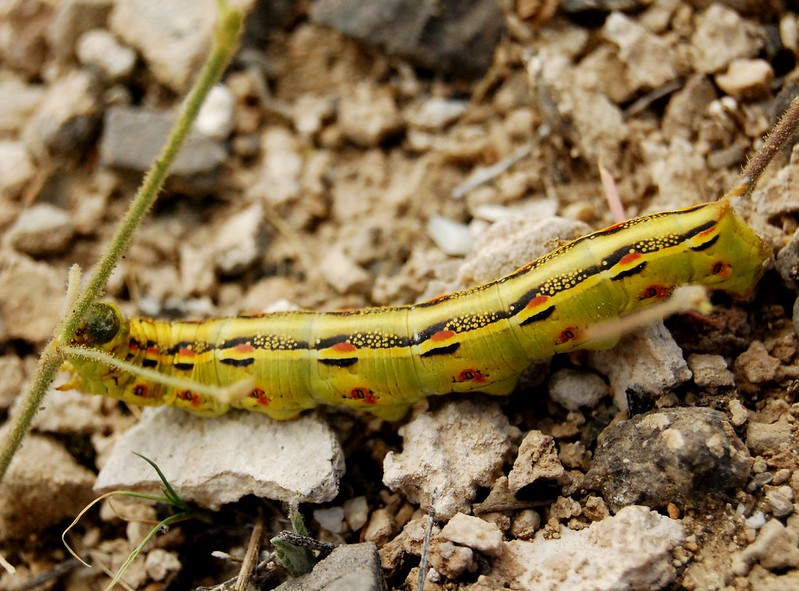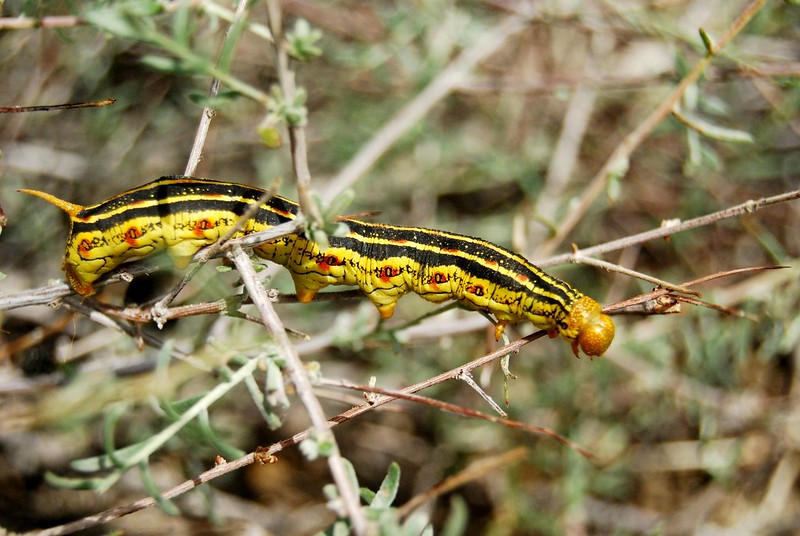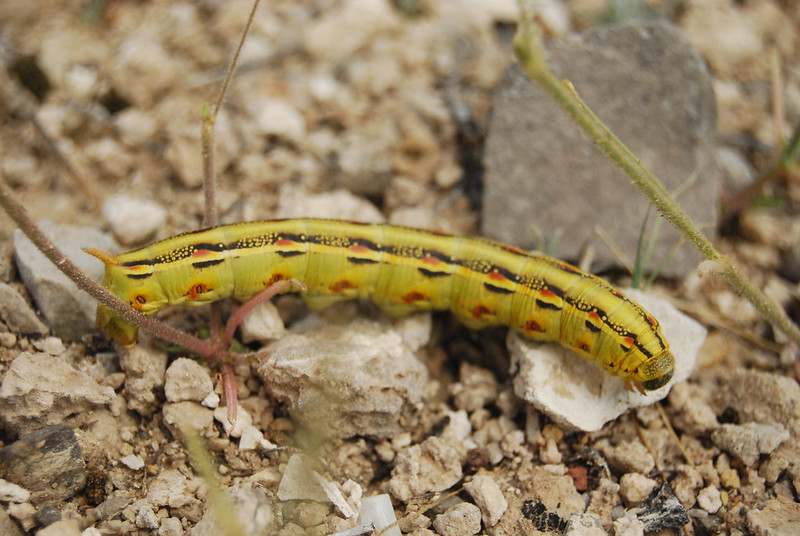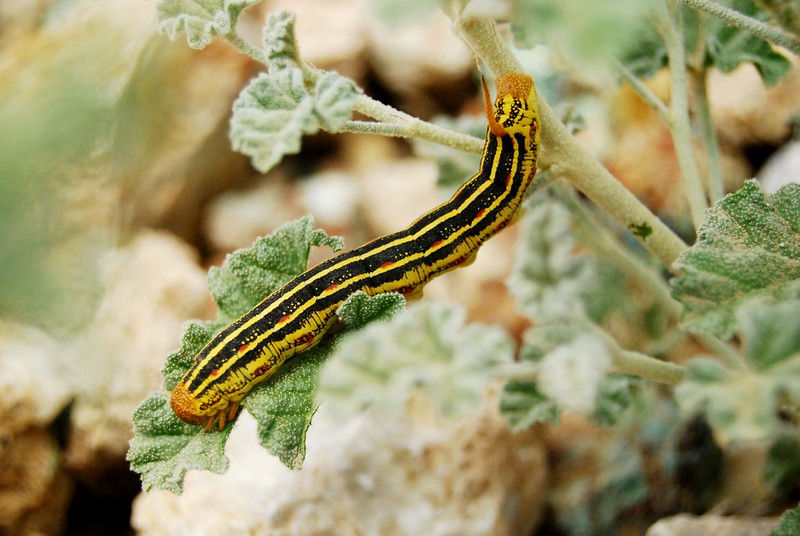jamesp
Cave Dweller 
Member since October 2012
Posts: 36,607
|
Post by jamesp on Sept 28, 2017 10:25:23 GMT -5
From Wiki, serious caterpillar toxins. hmmm Chemical defenses More aggressive self-defense measures are taken by some caterpillars. These measures include having spiny bristles or long fine hair-like setae with detachable tips that will irritate by lodging in the skin or mucous membranes.[7] However some birds (such as cuckoos) will swallow even the hairiest of caterpillars. Other caterpillars acquire toxins from their host plants that render them unpalatable to most of their predators. For instance, ornate moth caterpillars utilize pyrrolizidine alkaloids that they obtain from their food plants to deter predators.[11] The most aggressive caterpillar defenses are bristles associated with venom glands. These bristles are called urticating hairs. A venom which is among the most potent defensive chemicals in any animal is produced by the South American silk moth genus Lonomia. Its venom is an anticoagulant powerful enough to cause a human to hemorrhage to death (See Lonomiasis).[12] This chemical is being investigated for potential medical applications. Most urticating hairs range in effect from mild irritation to dermatitis. Giant swallowtail caterpillar everting its osmeterium in defense Plants contain toxins which protect them from herbivores, but some caterpillars have evolved countermeasures which enable them to eat the leaves of such toxic plants. In addition to being unaffected by the poison, the caterpillars sequester it in their body, making them highly toxic to predators. The chemicals are also carried on into the adult stages. These toxic species, such as the cinnabar moth (Tyria jacobaeae) and monarch (Danaus plexippus) caterpillars, usually advertise themselves with the danger colors of red, yellow and black, often in bright stripes (see aposematism). Any predator that attempts to eat a caterpillar with an aggressive defense mechanism will learn and avoid future attempts. Some caterpillars regurgitate acidic digestive juices at attacking enemies. Many papilionid larvae produce bad smells from extrudable glands called osmeteria. S American Silk moth kills by about eating the inside of your body with hematomas. Cool.(lonomia)  This might be a lonomia 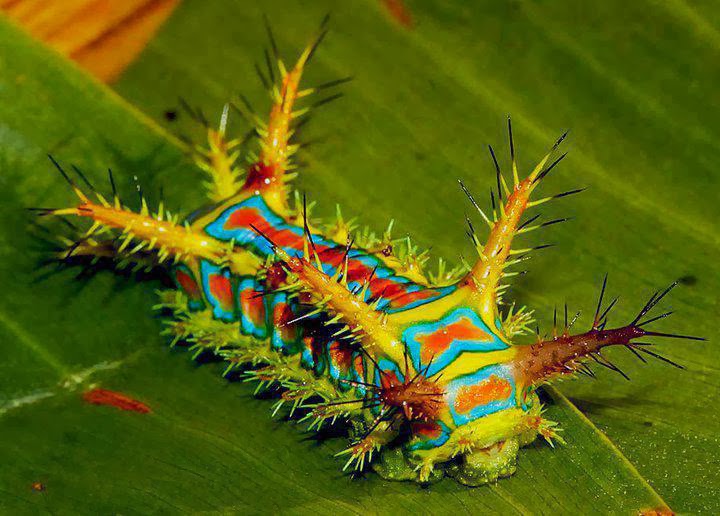 |
|
jamesp
Cave Dweller 
Member since October 2012
Posts: 36,607
|
Post by jamesp on Sept 28, 2017 11:02:00 GMT -5
Around here you have to be careful when picking corn, we call them pack saddles  Here it is Mike en.wikipedia.org/wiki/Saddleback_caterpillarThere are tree farms down south to raise this one. Or a tree or two in the yard to harvest these morsels. Look familiar Mike ? Grandad had a Catawba tree. He even froze them. Maybe Pat would freeze some for me. Next to the English peas  .  |
|
|
|
Post by Pat on Sept 28, 2017 11:09:16 GMT -5
I googled odd caterpillars. Wow! What an amazing group of critters!
Rarely see any around here. Most familiar is the brown and black fuzzy bear.
|
|
|
|
Post by fantastic5 on Sept 28, 2017 11:57:26 GMT -5
Okay, taking Pat 's suggestion, I found this guy. |
|
|
|
Post by MrMike on Sept 28, 2017 13:30:38 GMT -5
Around here you have to be careful when picking corn, we call them pack saddles  Here it is Mike en.wikipedia.org/wiki/Saddleback_caterpillarThere are tree farms down south to raise this one. Or a tree or two in the yard to harvest these morsels. Look familiar Mike ? Grandad had a Catawba tree. He even froze them. Maybe Pat would freeze some for me. Next to the English peas  .  Oh the catalpa worm, great bait for catfish! |
|
jamesp
Cave Dweller 
Member since October 2012
Posts: 36,607
|
Post by jamesp on Sept 28, 2017 14:08:14 GMT -5
Okay, taking Pat 's suggestion, I found this guy. I yearn to be the narrator in your video. He should be a Hollywood voice. Vocabulary and application of is off the chart. |
|
|
|
Post by Garage Rocker on Sept 28, 2017 14:41:15 GMT -5
Okay, taking Pat 's suggestion, I found this guy. I yearn to be the narrator in your video. He should be a Hollywood voice. Vocabulary and application of is off the chart. James, he has another gig already. Lead singer for Cake???
Uncanny resemblance.
|
|
|
|
Post by rockpickerforever on Sept 28, 2017 14:57:54 GMT -5
From Wiki, serious caterpillar toxins. hmmm Chemical defenses S American Silk moth kills by about eating the inside of your body with hematomas. Cool.(lonomia) This might be a lonomia  What you got there, James is The Stinging Rose Caterpillar (Parasa indetermina) (Looks like it got into a box of colorful crayons, lol.) Habitat: New York to Florida, west to Missouri and Texas. Not from South America.
WRONG! Found the correct information - The Wattle Cup Caterpillar
The Wattle Cup Caterpillar (Calcarifera ordinata) is a moth of the Limacodidae family. It is widespread in northern Australia.
The caterpillar is bright yellow with blue green and orange colours. There are a number of tubercles (or warty outgrowths) around its body. They have reduced legs and move using a slug-like movement of the underside of the body. Pretty! More here.
So the the Stinging Rose Caterpillar (Parasa indetermina) is a totally different species, from a different continent. Still pretty, can still cause itching, rash, dermatitis.
There are some color variations within the species, but all of them look pretty cool. Most likely what the species name "indetermina" alludes to. Look, but don't touch. 

You can pretty much count on it being toxic if it has hairs, spines, or is brightly colored.
Here is a website with photos of 13 stinging caterpillars.
I have these in my yard right now - Gulf Fritillaries (Agraulis vanillae) They feed exclusively on leaves of the passionflower vine. 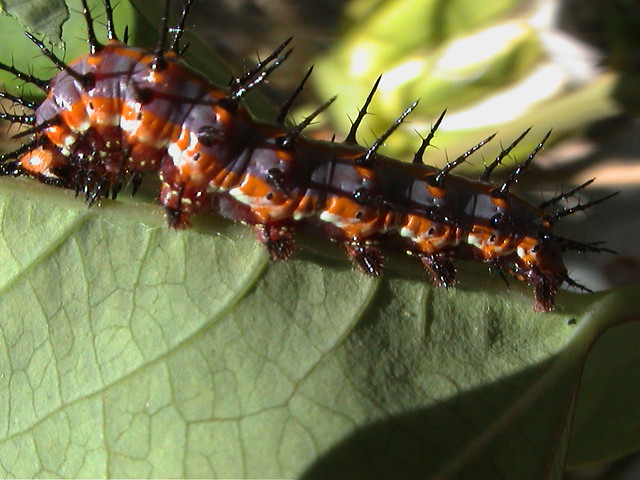
Passion flower. I have the non-fruiting ones. 
Itty bitty 1/16" egg, looks like a tiny, sparkling hatbox. 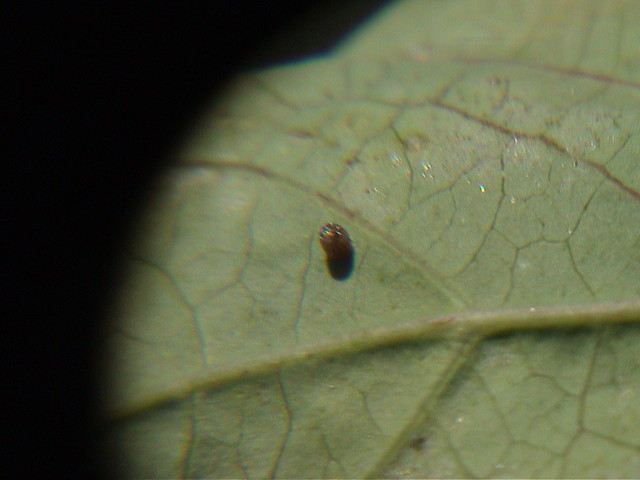
At first, I worried they would strip all the foliage off the plant, but it hasn't happened yet. It seems to be pretty resilient.
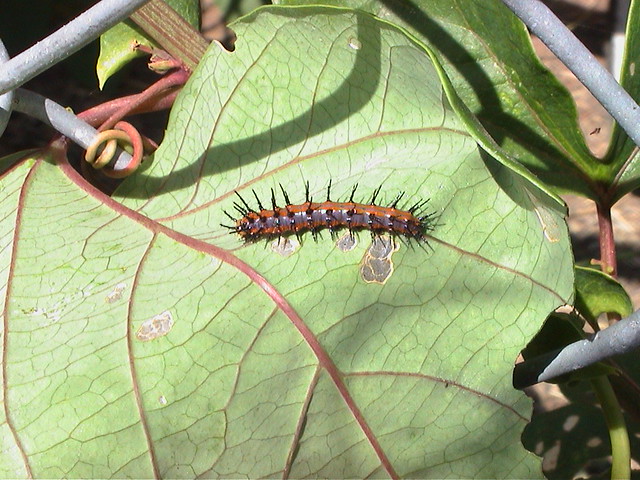
By the time they are ready to pupate, they are about 1.5 -or so inches long.
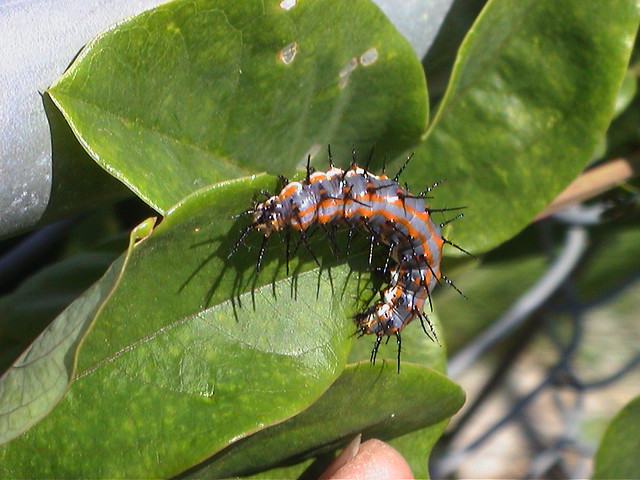
Pupa.
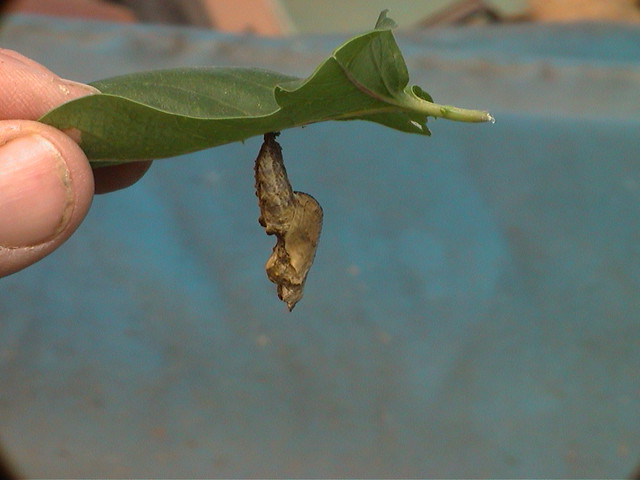
The butterfly
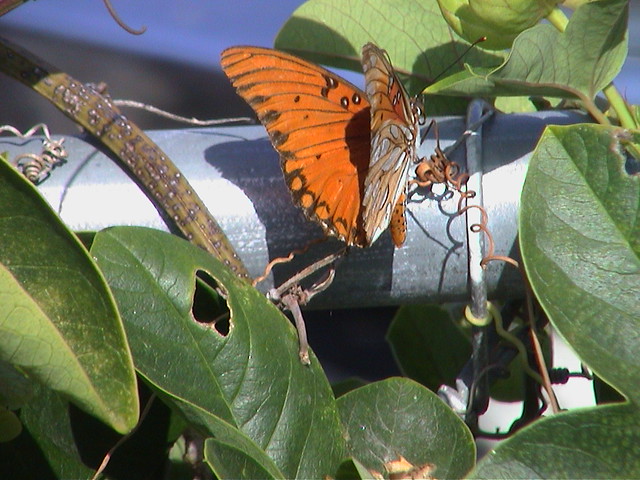
Despite the caterpillars spiky exterior, I have never had a reaction to them.
|
|
jamesp
Cave Dweller 
Member since October 2012
Posts: 36,607
|
Post by jamesp on Sept 29, 2017 5:07:40 GMT -5
I yearn to be the narrator in your video. He should be a Hollywood voice. Vocabulary and application of is off the chart. James, he has another gig already. Lead singer for Cake???
Uncanny resemblance.
Great analogy Randy. Monotone glurb talk. |
|
jamesp
Cave Dweller 
Member since October 2012
Posts: 36,607
|
Post by jamesp on Sept 29, 2017 5:27:38 GMT -5
Wherever you have foliage you have caterpillars Jean rockpickerforever. Most of the time I ever got stung was brushing against them on the outside of my arms while reaching into plants when weeding. 'Look before you reach' is best policy. Not too common of a problem. Brushing by lightly gives way less of a sting than say pinching one in the crotch of you arm opposite your elbow. Bad day that one. The ones with the stiff spines are efficient at delivery. Hairy ones less likely to deliver. There was a gal that had a nursery close by that grew passionflowers. They are the worst about attracting caterpillars. Passionflowers serve as a host to many butterflies. Calloway Gardens Butterfly House. Specifically grown host plants to give habitat to exotic and native butterflies.   |
|
|
|
Post by vegasjames on Sept 29, 2017 7:07:48 GMT -5
|
|
jamesp
Cave Dweller 
Member since October 2012
Posts: 36,607
|
Post by jamesp on Sept 30, 2017 11:07:41 GMT -5
vegasjamesDoes this worm feed on a particular species of plant ? it has various costumes like the Catawba worm out this way.
|
|
|
|
Post by vegasjames on Sept 30, 2017 16:43:33 GMT -5
vegasjames Does this worm feed on a particular species of plant ? it has various costumes like the Catawba worm out this way. I don't know, I had never seen these species before. But other than the markings they look just like tomato hornworms. They mainly seemed to be on the scarlet globemallow, but I did see them on other plants such as the rhatany. Globemallow though would be a better food sources though since it is more leafy and are in abundance most of the year. And the abundant bright orange flowers would make it easy for the moth to spot. |
|
jamesp
Cave Dweller 
Member since October 2012
Posts: 36,607
|
Post by jamesp on Sept 30, 2017 18:21:01 GMT -5
vegasjames Does this worm feed on a particular species of plant ? it has various costumes like the Catawba worm out this way. I don't know, I had never seen these species before. But other than the markings they look just like tomato hornworms. They mainly seemed to be on the scarlet globemallow, but I did see them on other plants such as the rhatany. Globemallow though would be a better food sources though since it is more leafy and are in abundance most of the year. And the abundant bright orange flowers would make it easy for the moth to spot. Sphaeralcea(globe mallow) species are used as food plants by the larvae of some Lepidoptera(moths and butterflies) species including Schinia olivacea, which has been recorded on S. lindheimeri. White Lined Sphinx Moth James. Occurs in Death Valley, near your Las Vegas. Central Anerica, Mexico, throughout US, on into Canada.  |
|
|
|
Post by vegasjames on Sept 30, 2017 18:46:15 GMT -5
I don't know, I had never seen these species before. But other than the markings they look just like tomato hornworms. They mainly seemed to be on the scarlet globemallow, but I did see them on other plants such as the rhatany. Globemallow though would be a better food sources though since it is more leafy and are in abundance most of the year. And the abundant bright orange flowers would make it easy for the moth to spot. Sphaeralcea(globe mallow) species are used as food plants by the larvae of some Lepidoptera(moths and butterflies) species including Schinia olivacea, which has been recorded on S. lindheimeri. White Lined Sphinx Moth James. Occurs in Death Valley, near your Las Vegas. Central Anerica, Mexico, throughout US, on into Canada.  That's it. Pics of the caterpillars of this moth further down in this link: www.silkmoths.bizland.com/Sphinx/hlinelin.htm |
|
Deleted
Deleted Member
Member since January 1970
Posts: 0
|
Post by Deleted on Sept 30, 2017 18:58:35 GMT -5
jamespvegasjamesThat moth and it's worms are seasonally and occasionally super common all over the Mojave desert. I recently saw them on the porch of a customer in Barstow that had a particularly lush desert garden.
|
|
jamesp
Cave Dweller 
Member since October 2012
Posts: 36,607
|
Post by jamesp on Oct 1, 2017 6:19:14 GMT -5
jamespvegasjamesThat moth and it's worms are seasonally and occasionally super common all over the Mojave desert. I recently saw them on the porch of a customer in Barstow that had a particularly lush desert garden. When looking at images I noticed many were from Arizona, Nevada, N Mexico. Common down into Mexico. Must like that hot dry stuff. Bet your replies eat them up. |
|
jamesp
Cave Dweller 
Member since October 2012
Posts: 36,607
|
Post by jamesp on Oct 1, 2017 6:23:35 GMT -5
I noticed they show it gathering nectar from Cannas in your link. I have observed them gathering nectar from my cannas in late summer and only as the sun is falling vegasjames. A sharp eerie buzzing sound from their wings. |
|







 .
.

















